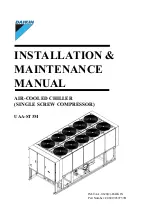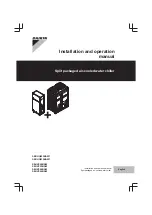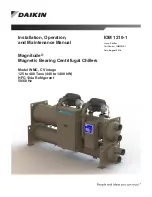
CH160
22
30
o
45
o
R~200
~ 0,3 mm
~ 0,3 mm (0,01”)
30
o
45
o
REMOVING THE KNIVES
Remove the knife lock nuts (M10). Fig. 18.
Remove the knife fastening bolts (M10). Turn
the wrench in such a way that your hands
would not hit the knife if the wrench should
slip. Fig. 19.
SHARPENING THE KNIVES
Sharpen all knives equally.
This ensures disk balance.
Avoid heating the knife
during sharpening.
Wear protective gloves when
handling or anvils.
1.
2.
The knives need sharpening when
the self-feeding of wood has decreased;
the power demand has increased;
the chip surface is rough.
Normally, the knives can be sharpened several
times without actually being removed (with, e.g., a
sharpening stone or belt grinder).
More thorough conditioning is carried out with a
surface grinder, with the knives removed.
The new knives are sharpened to a concave sha-
pe, R=200. The sharpening angle is 30° and hone
angle is 45° . The hone angle prevents the edge
from breaking. Fig. 20.
It is recommended that the knives be sharpened
to a concave shape. If this is not possible, the
NQLIHLVVKDUSHQHGWRDÀDWSUR¿OH)LJ
The hone angle is ground to a 45° angle with two
to three longitudinal strokes, using a level sharpe-
ning stone.
Burrs are removed from the knife fastening bolt
side, grinding with the surface. Fig. 22.
•
•
•
Locking pin
Whet stone
KNIFE
KNIFE
Fig. 18. Locking the disk and removing the lock nuts
Fig. 19. Removing the knife fastening bolts
)LJ7KHSUR¿OHRIDFRQFDYHNQLIH
)LJ$NQLIHZLWKDÀDWSUR¿OH
CAUTION!
!
















































